Animals that start with U include mammals such as uakaris, Uinta chipmunk, Utah prairie dog and unadorned rock wallaby; birds such as umbrellabirds and Uluguru violet-backed sunbird; insects such as the Ulysses butterfly; and fish such as the unicorn crestfish.
On this page is a list including these and many other interesting animals beginning with U, together with pictures and facts on each species.
Below each animal you’ll find links that you can follow for further information, pictures and videos.
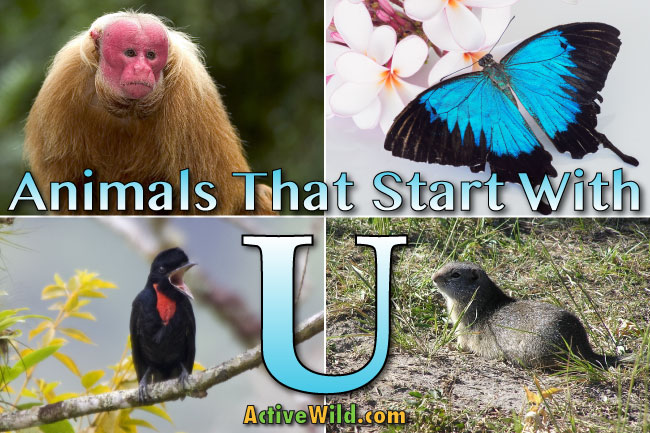
Included in this list are individual species (e.g., the Utah prairie dog) and groups of species (e.g., umbrellabirds) whose names begin with U.
The scientific name and conservation status are provided for each of the individual species.
Index
Scroll down to see pictures and facts on all of the animals, or use the index below to go directly to a particular animal.
List Of Animals Beginning With U
- Uakari
- Ugandan Kob
- Uguisu (Japanese Bush Warbler)
- Uinta Chipmunk
- Uinta Ground Squirrel
- Ultimate Shrew
- Uluguru Violet-Backed Sunbird
- Ulysses Butterfly
- Umbrellabirds
- Unadorned Rock Wallaby
- Unalaska
- Unau
- Underwood’s Long-Tongued Bat
- Unicorn Crestfish
- Unstriped Ground Squirrel
- Ural Field Mouse
- Urial
- Uromastyx
- Usambara Shrew
- Utah Prairie Dog
You can find animals beginning with other letters by clicking on the squares below…



























Uakari
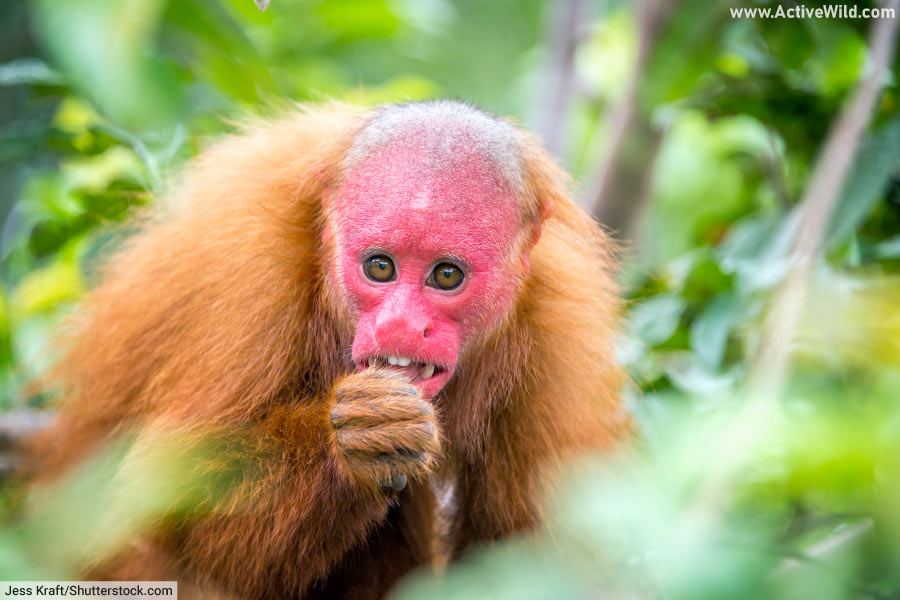
Type of animal: Mammal
Family: Pitheciidae
Genus: Cacajao
Where found: South America
Uakaris are monkeys of genus Cacajao. These distinctive primates have bald heads, long shaggy coats and relatively short tails.
The four uakari species, and the conservation status of each, are listed below:
- Bald uakari / red uakari Cacajao calvus Vulnerable
- Golden-backed / black-headed uakari, Cacajao melanocephalus Least Concern
- Aracá uakari Cacajao ayresi Least Concern
- Neblina uakari Cacajao hosomi Vulnerable
All four uakaris are found in the Amazon rainforest. Their closest relatives are the saki monkeys and titi monkeys; all three monkey groups belong to the family Pitheciidae.
Pitheciidae is one of five monkey families that together are known as the “New World Monkeys”. The New World monkeys split from the Old World monkeys before apes evolved from Old World monkeys.
Therefore, apes (including humans) are more closely-related to Old World monkeys than they are to New World monkeys such as uakaris.
Discover More With Active Wild
You can find out more about monkeys on this page: Monkeys - The Ultimate Guide
You can see more ugly animals on this page: Ugly Animals List with Pictures & Facts
Ugandan Kob
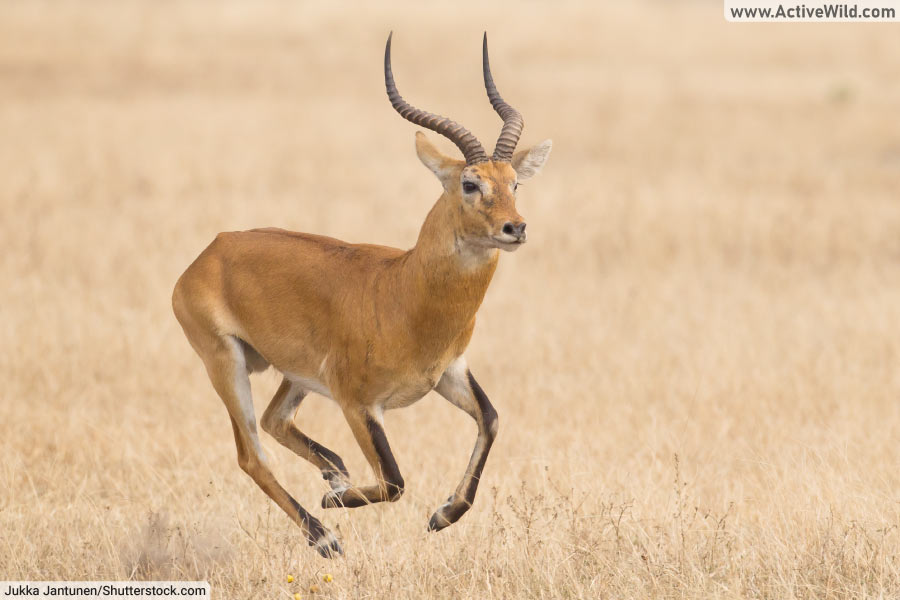
Scientific name: Kobus kob thomasi
Type of animal: Mammal
Family: Bovidae
Where found: Africa
Conservation status: Least Concern
The Ugandan kob is a subspecies of kob, an antelope found across Central Africa.
Kobs are medium-sized antelopes. Males, which are slightly larger than females, have backwards-pointing, spiraled, lyre-shaped horns.
The Uganda kob subspecies can be identified by its reddish-brown coat; other kob subspecies range from light brown to dark brown in color.
The Ugandan kob inhabits shrublands and grasslands not just in Uganda, but also in the Democratic Republic of the Congo and South Sudan.
Although the Ugandan kob is not currently threatened, the subspecies is now locally extinct in both Kenya and Tanzania as a result of hunting and habitat loss.
Discover More With Active Wild
You can see more African animals on this page: African Animals List with Pictures & Facts
Discover more about mammals on this page: Mammals - The Ultimate Guide
Uguisu (Japanese Bush Warbler)

Scientific name: Horornis diphone
Type of animal: Bird
Family: Cettiidae
Where found: Asia
Conservation status: Least Concern
The uguisu is a small songbird better known as the Japanese bush warbler (uguisu is the Japanese name for the species).
The Japanese bush warbler is a common, year-round resident throughout most of Japan and the northern Philippines. In other regions, it is migratory, and may be found seasonally in China, Korea and Taiwan.
Like many warblers, the Japanese bush warbler is relatively nondescript, being a small bird with pale brown-grey plumage. It is known for its familiar song, which can be heard from early spring.
Discover More With Active Wild
You can see more Asian animals on this page: Asian Animals List with Pictures & Facts
You can discover more about birds on this page: Birds - The Ultimate Guide
Uinta Chipmunk
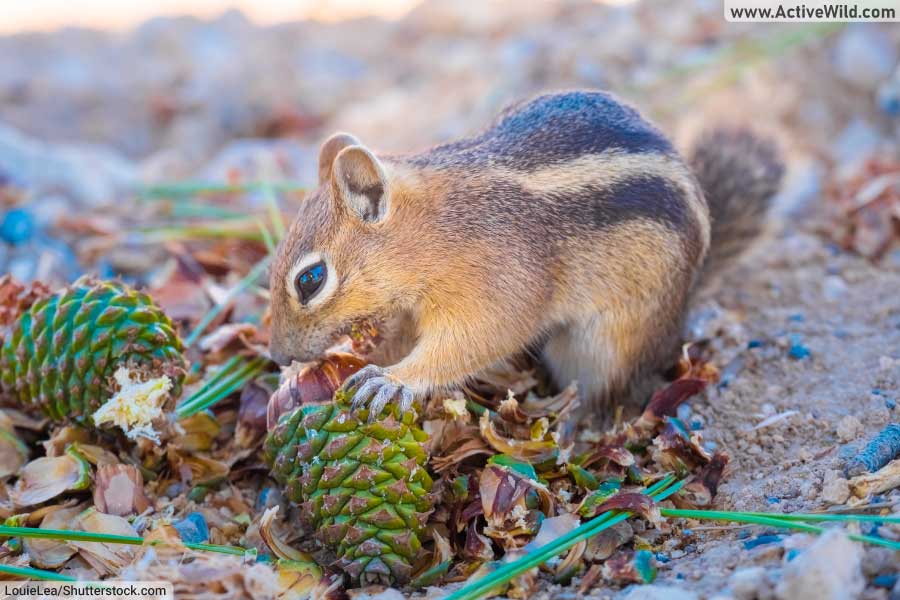
Scientific name: Neotamias umbrinus
Type of animal: Mammal
Family: Sciuridae
Where found: North America
Conservation status: Least Concern
There are 25 species of chipmunk, 24 of which are found in North America. (Only the Siberian chipmunk, which is found in Asia, is found outside of North America.)
The Uinta chipmunk lives in mountainous forests in western USA. It is a medium-sized species, with a reddish-brown coat and white stripes across the face and back.
Like all chipmunks, the Uinta chipmunk is a rodent, and a member of the squirrel family, Sciuridae. It has a mainly herbivorous diet, but will also occasionally eat insects and carrion.
The Uinta chipmunk is named after the Uinta Mountains of Utah and Wyoming.
Discover More With Active Wild
You can find out more about rodents on this page: Rodents - The Ultimate Guide
Discover more amazing North American animals on this page: North American Animals - Pictures & Facts
Discover more about mammals on this page: Mammals - The Ultimate Guide
Uinta Ground Squirrel
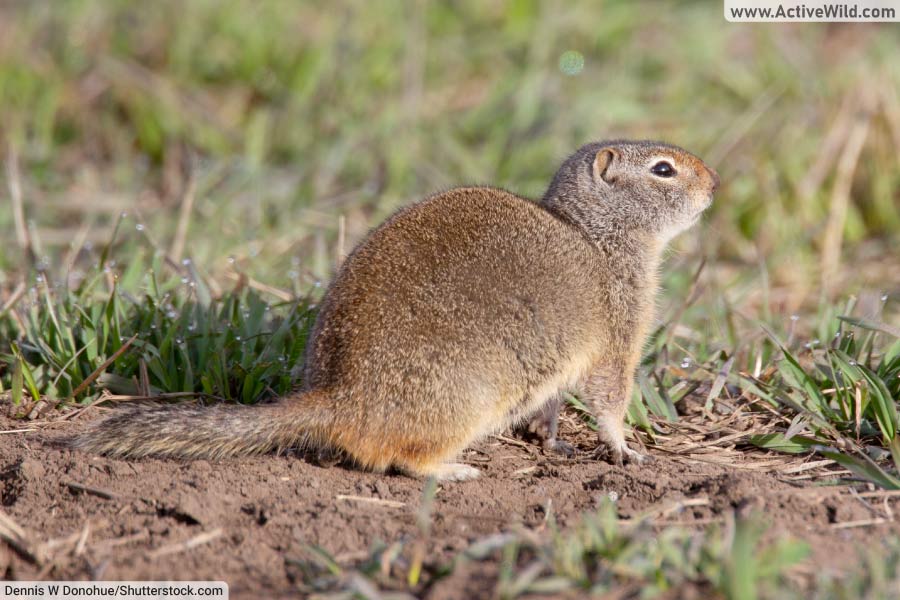
Scientific name: Urocitellus armatus
Type of animal: Mammal
Family: Sciuridae
Where found: North America
Conservation status: Least Concern
The Uinta ground squirrel is a rodent found in Wyoming, Montana, Idaho and Utah in the United States. Its preferred habitat is grasslands and shrublands. It has brown-gray fur and a moderately bushy tail.
The species is only active for a few months of the year. From as early as mid-July it retreats to its burrow, where it hibernates until mid-March of the next year.
Like all ground squirrels, the Uinta ground squirrel is a member of the squirrel family, Sciuridae. The species is named after the Uinta Mountains of Utah and Wyoming.
Discover More With Active Wild
You can find out more about rodents on this page: Rodents - The Ultimate Guide
Discover more amazing North American animals on this page: North American Animals - Pictures & Facts
Discover more about mammals on this page: Mammals - The Ultimate Guide
Ultimate Shrew
(No image available)
Scientific name: Crocidura ultima
Type of animal: Mammal
Family: Soricidae
Where found: Africa
Conservation status: Data Deficient
The ultimate shrew is a member of the shrew family, Soricidae found in montane tropical forests in Kenya.
Although the species’ conservation status is unknown due to a lack of available data, the habitat in which it lives is severely threatened by human activities such as logging and the building of settlements.
Although shrews resemble mice, they are not rodents. In fact, shrews are more closely-related to animals such as hedgehogs, moles and solenodons.
Discover More With Active Wild
You can see more African animals on this page: African Animals List with Pictures & Facts
Discover more about mammals on this page: Mammals - The Ultimate Guide
Uluguru Violet-Backed Sunbird
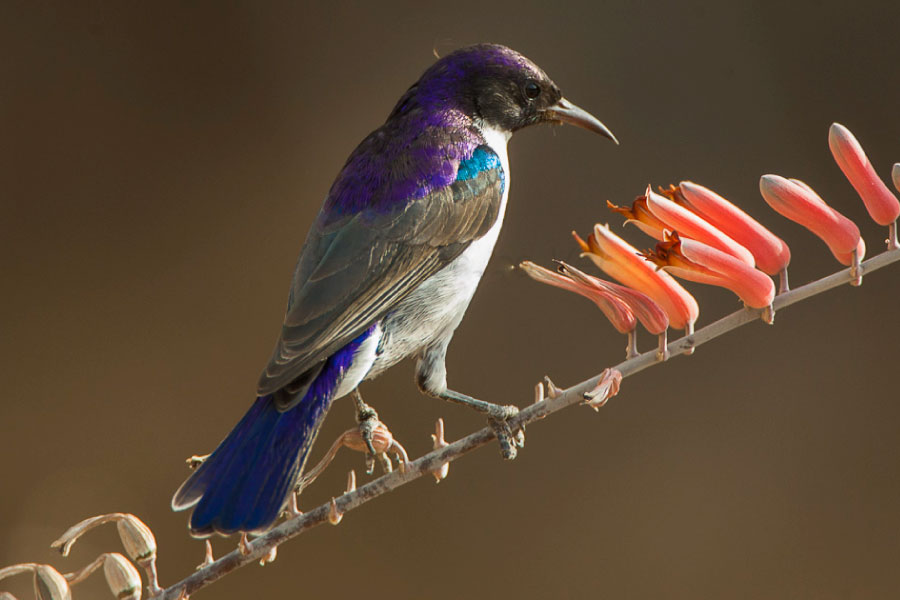
Scientific name: Anthreptes neglectus
Type of animal: Bird
Family: Nectariniidae
Where found: Africa
Conservation status: Least Concern
The Uluguru violet-backed sunbird is a species of sunbird found in Kenya, Mozambique and Tanzania, in East Africa. It is named after the iridescent purple-blue plumage of the males
Like other sunbirds, the Uluguru violet-backed sunbird is a small passerine (perching bird) with a downward-curving bill, which is an adaption for feeding on nectar.
The Uluguru violet-backed sunbird is one of four species that make up a “superspecies”, or “species complex” – a group of species that are so closely-related that it is difficult to distinguish between them.
Discover More With Active Wild
You can see more African animals on this page: African Animals List with Pictures & Facts
Discover more about birds on this page: Birds - The Ultimate Guide
Ulysses Butterfly

Scientific name: Papilio ulysses
Type of animal: Insect
Family: Papilionidae
Where found: Australia, Asia
Conservation status: Unknown
The Ulysses butterfly is a large butterfly found in Australia, Indonesia, Papua New Guinea and nearby islands.
Like many swallowtail butterflies, the hindwings of the Ulysses butterfly have elongated streamers. Its wingspan is around 14 cm (5.5 in).
The species is well-known due to its striking looks, large size, and bright blue color.
The Ulysses butterfly is found in tropical rainforests. It is one of over 550 species of swallowtail butterfly, which together make up the family Papilionidae.
Discover More With Active Wild
You can see more rainforest animals on this page: Rainforest Animals List with Pictures & Facts
Discover more about insects on this page: Insects - The Ultimate Guide
Umbrellabird

Type of animal: Bird
Family: Cotingidae
Genus: Cephalopterus
Where found: Central America / South America
Umbrellabirds are three species of mid to large rainforest birds found in Central and South America. They are named after the distinctive umbrella-like crest that covers their heads.
There are three species of umbrellabird: the long-wattled umbrellabird, Amazonian umbrellabird and Bare-necked umbrellabird. Together they make up the genus Cephalopterus.
All umbrellabirds have black plumage and a distinctive fleshy pouch, which is known as a wattle, hanging from the neck. This pouch can be inflated, and serves to amplify the birds’ booming calls.
The bare-necked umbrellabird, found in Costa Rica and Panama, is an endangered species. It is threatened mainly by habitat loss caused by banana and pineapple plantations.
Discover More With Active Wild
You can see more rainforest animals on this page: Rainforest Animals List with Pictures & Facts
Discover more about birds on this page: Birds - The Ultimate Guide
Unadorned Rock Wallaby

Scientific name: Petrogale inornata
Type of animal: Mammal
Family: Macropodidae
Where found: Australia
Conservation status: Least Concern
The unadorned rock wallaby is a medium-sized marsupial found in Queensland, Australia. It has a body shape typical of the kangaroo family, Macropodidae, with a long tail, powerful hind legs, and shorter arms.
Like all rock wallabies, the unadorned rock wallaby is nocturnal, and extremely agile, able to climb on rocky terrain with ease. The species has a pale, plain coat, hence its name.
Discover More With Active Wild
You can see more Australian animals on this page: Australian Animals List with Pictures & Facts
You can see more marsupials on this page: Marsupial List with Pictures & Facts
Unalaska
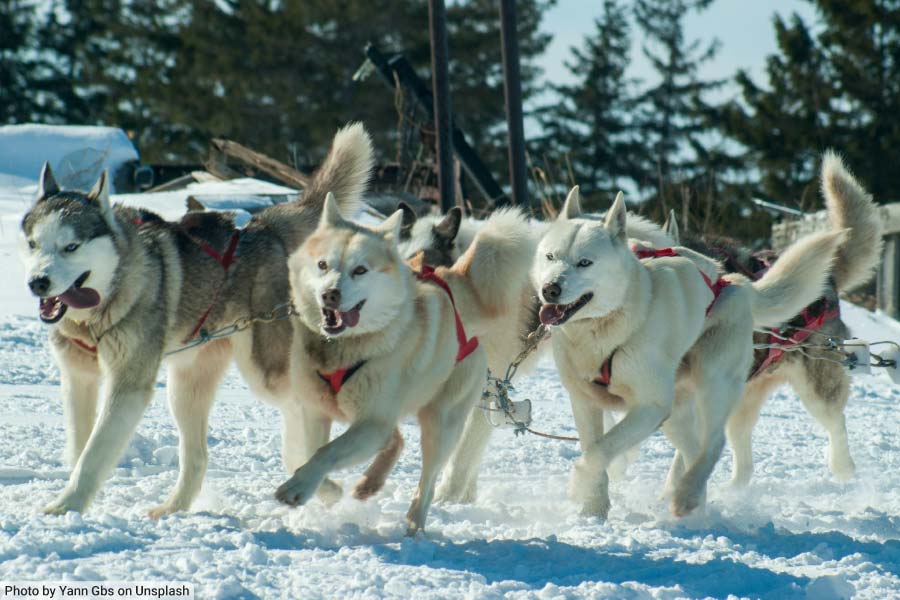
Scientific name: Canis familiaris / Canis lupus familiaris
Type of animal: Mammal
Family: Canidae
Where found: Antarctica
Conservation status: Domestic
There aren’t many animals that start with U, so we’ve included the sled dog, Unalaska. Unalaska was the lead dog on American explorer and naval officer Admiral Richard E. Byrd’s first Antarctic Expedition, which took place between 1928 and 1930.
Unalaska was part wolf, part St. Bernard, part setter and part Siberian husky. His coat was pure white.
Hand-picked by Admiral Byrd himself, Unalaska helped pull the sleds that transported Byrd and other members of the expedition as they conducted scientific missions in some of the world’s most inhospitable terrain.
Upon his return to the United States, Unalaska became part of a touring lecture show about the expedition.
Sadly, while the show was in Monroe, a city in Louisiana, Unalaska was hit by a car and killed. A memorial to this brave dog can still be seen in the gardens of the city’s Georgia Tucker assisted living community.
Discover More With Active Wild
You can find out more about dogs on this page: Dog Facts
You can see every dog species on this page: Dog Species List with Pictures & Facts
Unau
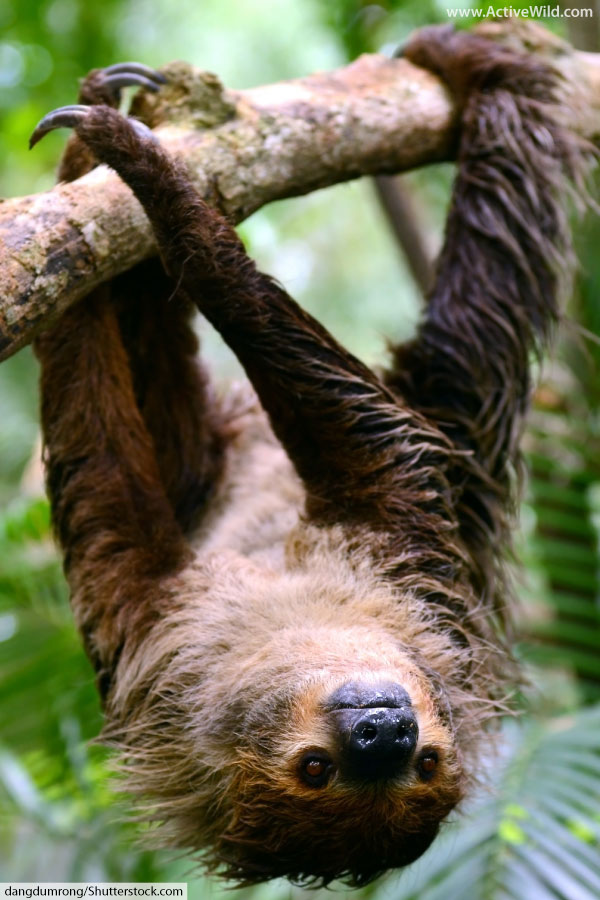
Type of animal: Mammal
Family: Choloepodidae
Where found: Central America, South America
Conservation status: Least Concern
Unau is another name for a two-toed sloth. Two-toed sloths are mammals found in the forests of Central and South America. Like all sloths, they are slow-moving, arboreal (tree-dwelling) animals that hang upside-down from branches.
There are two two-toed sloth species: Linnaeus's two-toed sloth Choloepus didactylus and Hoffmann's two-toed sloth Choloepus hoffmanni.
Both species are named after zoologists.
- Linnaeus's two-toed sloth is named after Carl Linnaeus, a Swedish scientist who helped develop the taxonomy system of naming and grouping species.
- Hoffmann's two-toed sloth is named after Karl Hoffmann, a German doctor and naturalist who discovered several new species.
The two-toed sloths are the only living members of the family Choloepodidae.
Choloepodidae is one of two sloth families, the other being Bradypodidae, which is home to the three-toed sloths.
There are two two-toed sloths and four three-toed sloths, making a total of six living sloth species.
Both the two-toed and three-toed sloths have three toes on their hind limbs, but the two-toed species have only two toes on their forelimbs.
Discover More With Active Wild
You can find out more about sloths on this page: Sloth Facts
Discover more rainforest animals on this page: Rainforest Animals List with Pictures & Facts
Underwood’s Long-Tongued Bat

Scientific name: Hylonycteris underwoodi
Type of animal: Mammal
Family: Phyllostomidae
Where found: Central America, Mexico
Conservation status: Least Concern
Underwood's long-tongued bat is a member of the New World leaf-nosed bat family, Phyllostomidae.
Found in the Americas, the two-hundred plus members of this family have large or intricate noses, which is an adaption thought to assist with echolocation.
(Echolocation is the way in which bats and other animals are able to “see” their surroundings using sound. By listening to the echoes produced by their calls, these animals can judge distances and locate prey.)
Underwood's long-tongued bat is found in Mexico and throughout Central America, and is fairly common throughout its range. Its diet includes nectar, pollen and fruit.
Discover More With Active Wild
Discover more about bats on this page: Bats - The Ultimate Guide
Discover more mammal types on this page: Types of Mammal
Unicorn Crestfish

Scientific name: Eumecichthys fiski
Type of animal: Fish
Family: Lophotidae
Where found: Tropical and Subtropical Waters Worldwide
Conservation status: Least Concern
Also known as the unicornfish, the unicorn crestfish is a marine fish found in tropical and subtropical waters worldwide.
This rarely-seen species has a long, silver, eel-like body. It is named for the horn-like projection on its face, which resembles the horn of a unicorn.
The unicorn crestfish inhabits the bathyal zone – an area of the sea between one and four km (.62 and 2.5 miles) in depth. Sunlight does not reach this part of the ocean.
Like cephalopods such as squid and octopuses, the unicorn crestfish produces ink with which it deters predators.
Discover More With Active Wild
You can see more ocean animals on this page: Ocean Animals List with Pictures & Facts
Discover more about the world's oceans on this page: The Marine Biome
Unstriped Ground Squirrel
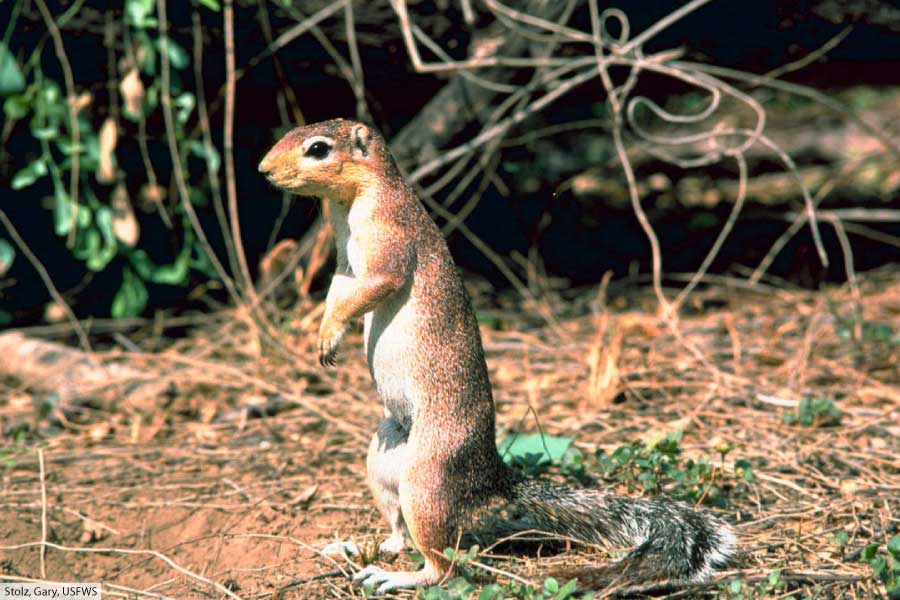
Scientific name: Xerus rutilus
Type of animal: Mammal
Family: Sciuridae
Where found: Africa
Conservation status: Least Concern
The unstriped ground squirrel is a ground-dwelling rodent found in several east African countries, including Kenya, Ethiopia, Uganda and Tanzania. It is one of around 286 species in the squirrel family, Sciuridae.
The species inhabits dry savannas and shrublands. It is a sandy-brown color, and, unlike other African ground squirrels, lacks any stripes along its sides.
The unstriped ground squirrel lives in burrows, and eats leaves, fruit, seeds and insects.
Discover More With Active Wild
You can see more African animals on this page: African Animals List with Pictures & Facts
Discover more about mammals on this page: Mammals - The Ultimate Guide
Ural Field Mouse

Scientific name: Apodemus uralensis
Type of animal: Mammal
Family: Muridae
Where found: Europe, Asia
Conservation status: Least Concern
Also known as the herb field mouse and pygmy field mouse, the Ural field mouse is one of over seven hundred species in the family Muridae. This animal family is home to many familiar rodents, including mice, rats and gerbils.
The Ural field mouse is found in eastern Europe and parts of Asia, where it inhabits fields and forest and woodland edges.
Discover More With Active Wild
You can see more Asian animals on this page: Asian Animals List with Pictures & Facts
Discover more about rodents on this page: Rodents - The Ultimate Guide
Urial

Scientific name: Ovis vignei
Type of animal: Mammal
Family: Bovidae
Where found: Asia
Conservation status: Vulnerable
The urial is a species of wild sheep found in Central and South Asia. Like all sheep and goats, it belongs to the subfamily Caprinae, which itself is part of the cattle family Bovidae.
The urial, which is also known as an arkars or shapo, lives in groups that typically contain around 30 individuals, although groups of over one hundred individuals do occur.
The male urial has large, backwards-spiraling, ridged horns that can reach up to 1 m / 3.3 ft. in length. The horns of the female are substantially shorter.
Grasslands and woodlands are the species’ preferred habitats, although it may also be found on rocky cliffs and in cold deserts.
Discover More With Active Wild
You can see more Asian animals on this page: Asian Animals List with Pictures & Facts
Discover different types of mammals on this page: Types of Mammal
Uromastyx
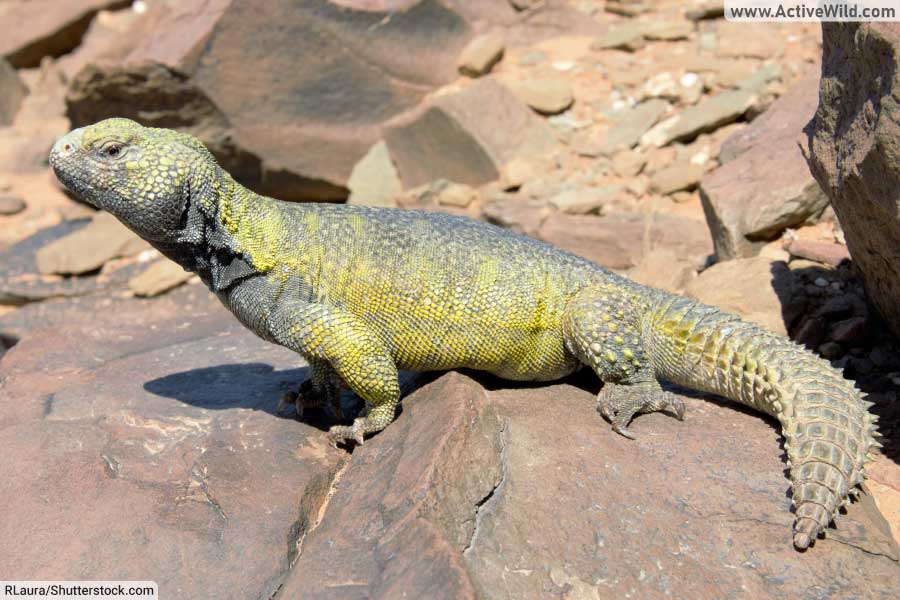
Type of animal: Reptile
Family: Agamidae
Where found: Africa, Asia
Uromastyx is a genus (a group of closely-related species) of mid-to-large sized lizards. They are found in North Africa and the Middle East.
Lizards of genus Uromastyx have heavy, spiked tails, which can be swung at high speed at aggressors as a means of defense. They are mostly herbivorous, but may supplement their diet with insects.
Some Uromastyx species are kept as pets.
Discover More With Active Wild
Discover more about reptiles on this page: Reptiles - The Ultimate Guide
You can see more African animals on this page: African Animals List with Pictures & Facts
Usambara Shrew
(No photo available)
Scientific name: Crocidura usambarae
Type of animal: Mammal
Family: Soricidae
Where found: Africa
Conservation status: Vulnerable
Found only in the East African country Tanzania, the Usambara shrew is a small mammal belonging to the shrew family, Soricidae. It lives in forest environments and is present in the Chome Forest Reserve, a wildlife reserve in the Pare Mountains.
Although shrews resemble small rodents such as mice, they belong to a separate family, Soricidae, and are more closely-related to animals such as hedgehogs and moles.
Discover More With Active Wild
You can see more African animals on this page: African Animals List with Pictures & Facts
Discover more about mammals on this page: Mammals - The Ultimate Guide
Utah Prairie Dog
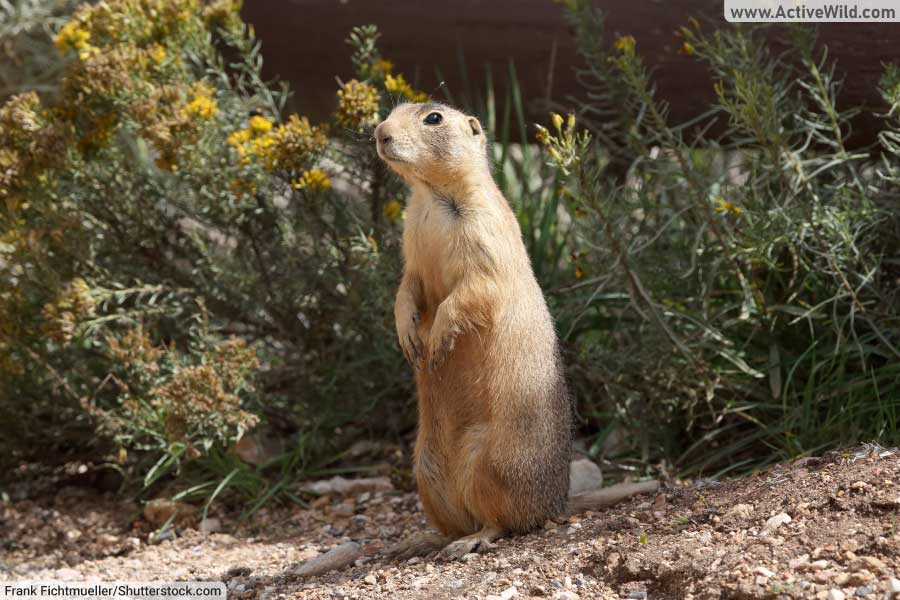
Scientific name: Cynomys parvidens
Type of animal: Mammal
Family: Sciuridae
Where found: North America
Conservation status: Endangered
Prairie dogs are rodents in the squirrel family, Sciuridae, found only in North America.
The Utah prairie dog is the smallest of the five species of prairie dog. As its name suggests, the species inhabits the grasslands of Utah.
The color of the Utah prairie dog rangers from pale, reddish-brown to sandy-yellow. It has dark ‘eyebrow’ markings and dark patches on its cheeks. The tip of its tail is white.
The Utah prairie dog lives with its extended family in large, multi-chambered burrows. The species is capable of causing significant damage to crops and fields, and as a result has been the victim of heavy persecution by farmers wishing to protect their livelihood.
This persecution, together with continued loss of habitat, has resulted in the species becoming endangered.
Discover More With Active Wild
You can find out more about grasslands on this page: Grassland Biome Facts
You can find out more about rodents on this page: Rodents - The Ultimate Guide
Discover more amazing North American animals on this page: North American Animals - Pictures & Facts
Discover more about mammals on this page: Mammals - The Ultimate Guide
Animals That Start With U: Conclusion
We hope that you’ve discovered some interesting animals with names beginning with U on this page.
You can discover more animals in our A to Z animals section by clicking on the letters below…





























